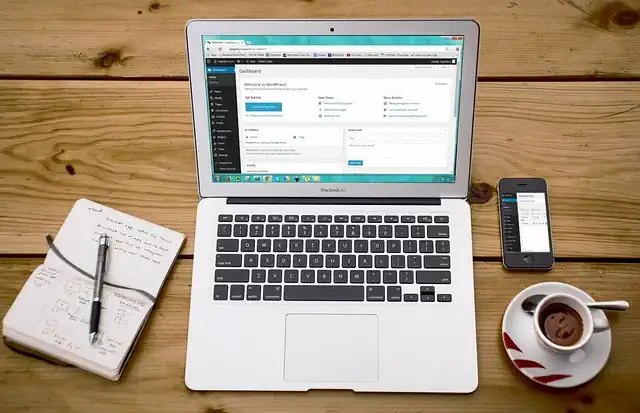How To Save Money As Much As Possible
Introduction

Introduction: Saving money is an essential aspect of financial planning. It helps you to achieve your financial goals, build an emergency fund, and secure your future. However, saving money can be challenging, especially if you have a limited income or high expenses. In this article, we will discuss some practical tips on how to save money as much as possible.
10 Simple Ways to Cut Your Monthly Expenses
Saving money is a goal that many people have, but it can be difficult to know where to start. Fortunately, there are many simple ways to cut your monthly expenses and save money. Here are 10 tips to help you get started.
1. Create a budget
The first step to saving money is to create a budget. This will help you see where your money is going and identify areas where you can cut back. Start by listing all of your monthly expenses, including rent or mortgage payments, utilities, groceries, and entertainment. Then, compare your expenses to your income and see where you can make adjustments.
2. Cut back on eating out
Eating out can be expensive, so try to limit the number of times you eat out each month. Instead, cook meals at home and pack your lunch for work. This will not only save you money, but it can also be healthier.
3. Cancel subscriptions
Take a look at your monthly subscriptions and see if there are any that you can cancel. This could include streaming services, gym memberships, or magazine subscriptions. If you don’t use them regularly, it’s not worth the cost.
4. Use coupons and discounts
Before making a purchase, look for coupons or discounts that can help you save money. This could include using a coupon code when shopping online or using a loyalty program at your favorite store.
5. Shop around for insurance
Insurance can be a significant expense, so it’s important to shop around for the best rates. Compare prices from different providers and see if you can get a better deal.
6. Cut back on energy usage
Reducing your energy usage can help you save money on your monthly utility bills. This could include turning off lights when you leave a room, using energy-efficient appliances, and adjusting your thermostat.
7. Use public transportation
If you live in an area with public transportation, consider using it instead of driving. This can save you money on gas and car maintenance, as well as reduce your carbon footprint.
8. Buy generic brands
When shopping for groceries, consider buying generic brands instead of name-brand products. They are often just as good, but cost less.
9. Sell items you no longer need
If you have items in your home that you no longer need, consider selling them. This could include clothing, electronics, or furniture. You can sell them online or at a garage sale.
10. Avoid impulse purchases
Impulse purchases can quickly add up and hurt your budget. Before making a purchase, ask yourself if you really need it and if it fits within your budget.
By following these simple tips, you can cut your monthly expenses and save money. Remember, every little bit counts, so even small changes can make a big difference. With a little effort and discipline, you can achieve your savings goals and enjoy a more financially secure future.
The Ultimate Guide to Couponing and Discount Hunting
Are you tired of constantly feeling like you’re spending too much money? Do you want to learn how to save as much as possible? Look no further than the world of couponing and discount hunting.
First and foremost, it’s important to understand the difference between a coupon and a discount. A coupon is a voucher that can be redeemed for a discount on a specific product or service. A discount, on the other hand, is a reduced price on a product or service without the need for a voucher.
Now that we have that cleared up, let’s dive into the world of couponing. The first step is to start collecting coupons. You can find them in newspapers, magazines, online, and even in-store. Make sure to keep them organized in a folder or binder so you can easily access them when you need them.
Next, it’s important to understand the different types of coupons. Manufacturer coupons are issued by the company that produces the product and can be used at any store that carries that product. Store coupons, on the other hand, are issued by the store and can only be used at that specific store.
Another way to save money is by signing up for loyalty programs. Many stores offer rewards programs that allow you to earn points or discounts on future purchases. Make sure to sign up for these programs and take advantage of any special offers or promotions they may have.
In addition to coupons and loyalty programs, it’s important to keep an eye out for sales and clearance items. Many stores offer discounts on certain products during specific times of the year. Make sure to take advantage of these sales and stock up on items you use frequently.
Another way to save money is by purchasing generic or store-brand products. These products are often just as good as name-brand products but are sold at a lower price. Don’t be afraid to give them a try and see if you can save some money.
Finally, it’s important to be mindful of your spending habits. Make a budget and stick to it. Avoid impulse purchases and only buy what you need. By being mindful of your spending habits, you can save money and avoid unnecessary expenses.
In conclusion, couponing and discount hunting can be a great way to save money. By collecting coupons, signing up for loyalty programs, taking advantage of sales and clearance items, purchasing generic products, and being mindful of your spending habits, you can save as much as possible. So what are you waiting for? Start couponing and discount hunting today and see how much money you can save.
How to Create a Budget and Stick to It
Saving money is a goal that many people have, but it can be difficult to achieve without a plan. One of the most effective ways to save money is by creating a budget and sticking to it. In this article, we will discuss how to create a budget and provide tips on how to stick to it.
The first step in creating a budget is to determine your income. This includes any money you receive from your job, investments, or other sources. Once you have determined your income, you need to calculate your expenses. This includes all of your bills, such as rent or mortgage payments, utilities, groceries, and any other expenses you have.
Once you have determined your income and expenses, you can create a budget. Start by listing all of your expenses and categorizing them. For example, you may have a category for housing, transportation, food, entertainment, and savings. Once you have categorized your expenses, you can assign a dollar amount to each category.
It is important to be realistic when creating your budget. If you set unrealistic goals, you are more likely to fail. Be honest with yourself about your spending habits and make adjustments as needed. For example, if you spend a lot of money on eating out, you may need to cut back in that category to meet your overall budget goals.
Once you have created your budget, it is important to track your spending. This will help you stay on track and make adjustments as needed. There are many tools available to help you track your spending, such as budgeting apps or spreadsheets. Find a method that works for you and stick to it.
One of the biggest challenges in sticking to a budget is avoiding impulse purchases. It can be tempting to buy something on a whim, but these purchases can quickly add up and derail your budget. To avoid impulse purchases, try to plan your purchases in advance. Make a list of what you need and stick to it. If you see something you want, wait a day or two before making the purchase. This will give you time to think about whether or not you really need it.
Another way to stick to your budget is to find ways to save money on your expenses. For example, you may be able to save money on your utilities by turning off lights when you leave a room or by using energy-efficient appliances. You may also be able to save money on groceries by buying in bulk or by using coupons.
Finally, it is important to stay motivated when trying to stick to a budget. Saving money can be difficult, but it is worth it in the long run. Set goals for yourself and reward yourself when you meet them. For example, if you meet your savings goal for the month, treat yourself to a small purchase or a night out.
In conclusion, creating a budget and sticking to it is one of the most effective ways to save money. Start by determining your income and expenses, creating a budget, and tracking your spending. Avoid impulse purchases, find ways to save money on your expenses, and stay motivated. With these tips, you can achieve your savings goals and improve your financial situation.
Maximizing Your Savings with Cashback and Rewards Programs
Saving money is a goal that many people have, but it can be difficult to achieve. However, there are ways to maximize your savings and make the most of your money. One way to do this is by taking advantage of cashback and rewards programs.
Cashback programs are a great way to earn money back on purchases you make. These programs work by giving you a percentage of your purchase back in cash. For example, if you make a $100 purchase and the cashback rate is 5%, you would receive $5 back. This may not seem like a lot, but over time, it can add up.
There are many cashback programs available, both online and in-store. Some popular online cashback programs include Rakuten, Swagbucks, and Honey. These programs offer cashback on purchases made through their websites or browser extensions. In-store cashback programs include those offered by credit cards, such as the Chase Freedom card, which offers 5% cashback on rotating categories.
Rewards programs are another way to save money. These programs work by offering points or rewards for purchases made. These points can then be redeemed for discounts, free items, or other rewards. Many stores and credit cards offer rewards programs, such as the Target Circle program or the American Express Membership Rewards program.
When choosing a rewards program, it is important to consider the rewards offered and how easy they are to redeem. Some programs may offer great rewards, but they may be difficult to redeem or have strict expiration dates. It is also important to consider any fees associated with the program, such as annual fees for credit card rewards programs.
Another way to maximize your savings with cashback and rewards programs is to stack them. This means using multiple programs at once to earn even more rewards or cashback. For example, you could use a cashback program to earn money back on a purchase, and then use a rewards program to earn points on the same purchase. This can help you save even more money in the long run.
It is important to remember that cashback and rewards programs should not be the sole reason for making a purchase. It is important to only make purchases that you need or were planning to make anyway. Using cashback and rewards programs should be seen as a bonus, not a reason to overspend.
In conclusion, cashback and rewards programs are a great way to maximize your savings and make the most of your money. By taking advantage of these programs, you can earn money back on purchases and earn rewards for future purchases. When choosing a program, it is important to consider the rewards offered, any fees associated with the program, and how easy it is to redeem rewards. Remember to only make purchases that you need or were planning to make anyway, and use cashback and rewards programs as a bonus to help you save even more money.
DIY Money-Saving Tips for Home and Car Maintenance
Saving money is something that everyone wants to do, but it can be difficult to know where to start. One of the best ways to save money is by taking care of your home and car maintenance yourself. Not only will this save you money on labor costs, but it will also help you avoid costly repairs down the road. Here are some DIY money-saving tips for home and car maintenance.
Home Maintenance
1. Change Your Air Filters
One of the easiest and most effective ways to save money on your home’s energy bills is by changing your air filters regularly. Dirty air filters can cause your HVAC system to work harder, which can lead to higher energy bills. By changing your air filters every three months, you can save up to 15% on your energy bills.
2. Seal Your Windows and Doors
Another way to save money on your energy bills is by sealing your windows and doors. This will help prevent drafts and keep your home at a more consistent temperature. You can use weatherstripping or caulking to seal any gaps around your windows and doors.
3. Insulate Your Attic
If your home is older, it may not be well-insulated. This can lead to higher energy bills, as your HVAC system has to work harder to keep your home at a comfortable temperature. By adding insulation to your attic, you can save up to 20% on your energy bills.
Car Maintenance
1. Change Your Oil
Regular oil changes are essential for keeping your car running smoothly. By changing your oil every 5,000 miles, you can help prevent engine damage and extend the life of your car. You can save money by changing your oil yourself, rather than taking it to a mechanic.
2. Check Your Tire Pressure
Proper tire pressure is important for both safety and fuel efficiency. By checking your tire pressure regularly and keeping your tires properly inflated, you can improve your gas mileage and save money on fuel costs.
3. Replace Your Air Filter
Your car’s air filter helps keep dirt and debris out of your engine. By replacing your air filter regularly, you can improve your car’s performance and fuel efficiency. You can save money by replacing your air filter yourself, rather than taking it to a mechanic.
Conclusion
By taking care of your home and car maintenance yourself, you can save money on labor costs and avoid costly repairs down the road. These DIY money-saving tips for home and car maintenance are easy to implement and can help you save money on your energy bills and fuel costs. So why not give them a try and see how much you can save?
Frugal Living: How to Live Well on a Tight Budget
Living on a tight budget can be challenging, but it doesn’t mean you have to sacrifice your quality of life. With a few simple changes to your lifestyle, you can save money and still enjoy the things you love. Here are some tips on how to save money as much as possible.
1. Create a budget
The first step to saving money is to create a budget. This will help you keep track of your expenses and identify areas where you can cut back. Start by listing all your monthly expenses, including rent, utilities, groceries, and transportation. Then, subtract your expenses from your income to see how much money you have left over. This will give you an idea of how much you can save each month.
2. Cut back on unnecessary expenses
Once you have a budget in place, it’s time to cut back on unnecessary expenses. This could include eating out less, canceling subscriptions you don’t use, and reducing your energy consumption. Look for ways to save money on everyday expenses, such as buying generic brands instead of name brands and shopping for deals and discounts.
3. Use cash instead of credit
Using cash instead of credit can help you avoid overspending and accumulating debt. When you pay with cash, you can see exactly how much money you have left and avoid the temptation to spend more than you can afford. If you do use credit, make sure to pay off your balance in full each month to avoid interest charges.
4. Cook at home
Eating out can be expensive, so try cooking at home instead. Not only is it cheaper, but it’s also healthier and more satisfying. Plan your meals in advance and buy groceries in bulk to save money. You can also try meal prepping to save time and ensure you always have a healthy meal on hand.
5. Shop secondhand
Buying secondhand items can save you a lot of money, especially for things like clothing and furniture. Look for thrift stores, consignment shops, and online marketplaces to find gently used items at a fraction of the cost. You can also sell your own items to make some extra cash.
6. Use public transportation
If you live in a city with public transportation, consider using it instead of driving. This can save you money on gas, parking, and car maintenance. You can also walk or bike to your destination if it’s close enough. Not only is it cheaper, but it’s also better for your health and the environment.
7. Find free entertainment
Entertainment can be expensive, but there are plenty of free activities you can enjoy. Look for free events in your community, such as concerts, festivals, and art shows. You can also enjoy the outdoors by hiking, biking, or having a picnic in the park. And don’t forget about the library, which offers free books, movies, and other resources.
In conclusion, living on a tight budget doesn’t have to be a burden. By creating a budget, cutting back on unnecessary expenses, using cash instead of credit, cooking at home, shopping secondhand, using public transportation, and finding free entertainment, you can save money and still live well. Remember, every little bit counts, so start small and work your way up to bigger savings. With a little effort and creativity, you can achieve your financial goals and enjoy a fulfilling life.
Investing in Your Future: Tips for Building a Strong Financial Foundation
Saving money is an essential part of building a strong financial foundation. Whether you’re saving for a rainy day or planning for your retirement, it’s important to make saving a priority. However, saving money can be challenging, especially if you’re living paycheck to paycheck. Fortunately, there are several strategies you can use to save money as much as possible.
The first step to saving money is to create a budget. A budget is a plan that outlines your income and expenses. By creating a budget, you can identify areas where you can cut back on expenses and save more money. Start by tracking your expenses for a month or two. This will give you a clear picture of where your money is going. Once you have a good understanding of your expenses, you can start making adjustments to your budget.
One way to save money is to reduce your monthly bills. Look for ways to cut back on your utility bills, such as turning off lights when you leave a room or using a programmable thermostat to regulate your home’s temperature. You can also save money on your cable and internet bills by negotiating with your provider or switching to a cheaper plan.
Another way to save money is to reduce your debt. High-interest debt, such as credit card debt, can be a significant drain on your finances. Consider consolidating your debt or transferring your balances to a card with a lower interest rate. This can help you pay off your debt faster and save money on interest charges.
Investing is another way to save money and build wealth over time. There are several types of investments, including stocks, bonds, and mutual funds. Before investing, it’s important to do your research and understand the risks and potential rewards of each investment. Consider working with a financial advisor to help you develop an investment strategy that aligns with your goals and risk tolerance.
Saving for retirement is also an important part of building a strong financial foundation. If your employer offers a 401(k) or other retirement plan, consider contributing as much as you can. Many employers offer matching contributions, which can help you save even more money for retirement. If you don’t have access to a retirement plan through your employer, consider opening an individual retirement account (IRA).
Finally, it’s important to be mindful of your spending habits. Avoid impulse purchases and unnecessary expenses. Before making a purchase, ask yourself if it’s something you really need or if it’s something you can live without. By being mindful of your spending habits, you can save more money and build a stronger financial foundation.
In conclusion, saving money is an essential part of building a strong financial foundation. By creating a budget, reducing your monthly bills, reducing your debt, investing, saving for retirement, and being mindful of your spending habits, you can save money as much as possible. Remember, saving money takes time and effort, but the rewards are well worth it. With a little discipline and determination, you can achieve your financial goals and build a brighter future for yourself and your family.
Conclusion
Conclusion: To save money as much as possible, it is important to create a budget, track expenses, avoid unnecessary purchases, negotiate bills, and find ways to increase income. Small changes in daily habits can lead to significant savings over time. It requires discipline and commitment, but the benefits of financial stability and security are worth the effort.







